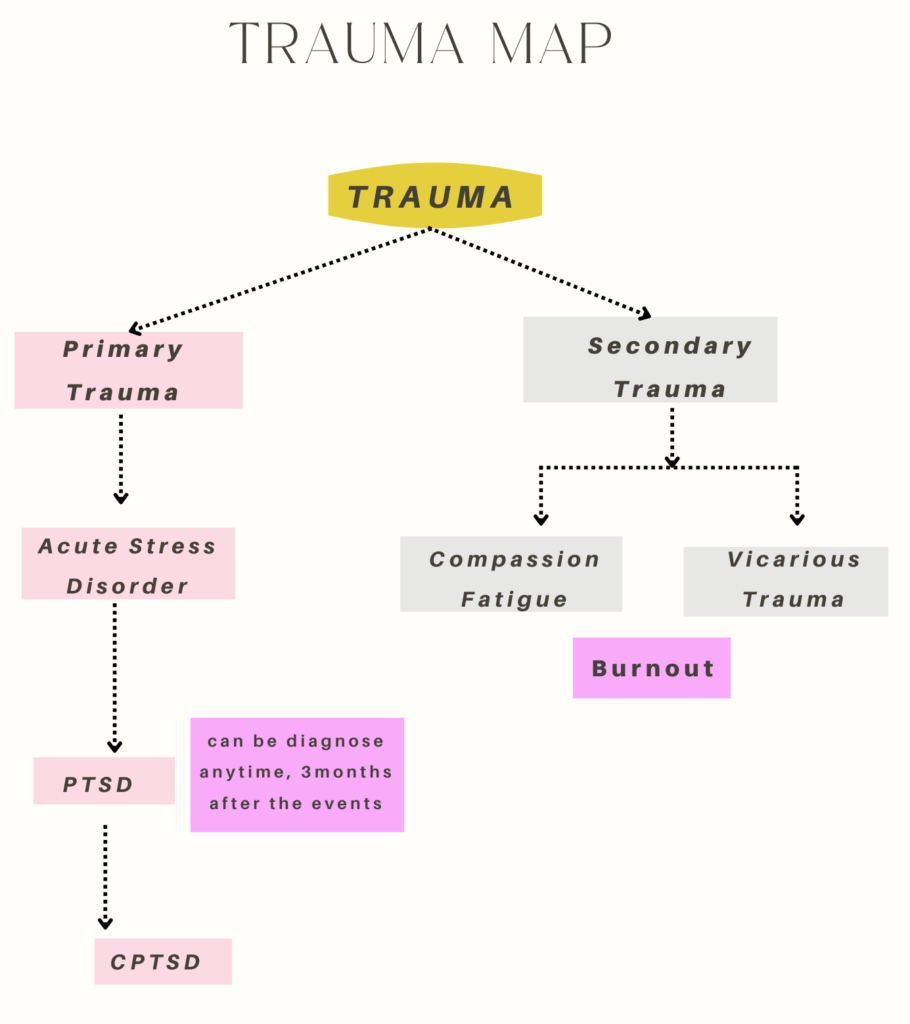If you are on this page it means that you are interested in understanding what trauma is. The information we have gathered and published can be found in the DSMV as well as multiple research studies conducted. We will have the original pages linked in for you.
Trauma is an important term to understand as it happens to everyone.
While there are two positive effects one can see from trauma the majority of people do not experience these two positives. These two positive effects are vicarious resilience and compassion satisfaction. These positives can largely be seen in those working with survivors of trauma. They improve ones resilience to traumatic events.
That being noted let’s begin having a look at understanding the more prominent aspects of trauma.
A wound.
It harms us emotionally, psychologically, physically and even spiritually. It creates fear and heightened anxiety responses.
In terms of mental health, trauma triggers an ’emotional response to a deeply distressing or disturbing event – leading to lasting feelings of anxiety and fear’ (Bancroft, Allen, Green, & Feuerle, 2015).
Sometimes the traumatic response may only last a short time, resulting in healing shortly after the event. Other times it lasts longer, turning into a painful wound.
It changes from an acute traumatic stress response to a post-traumatic stress response.
It can have a severe negative impact on one’s life and can result in feeling a loss of safety and trust in other people.
Trauma is known to trigger the ‘fight/flight response in our brains. It can result in self-isolation as the person’s sense of worth, sense of self, and feelings of control, are lost.
We generally recognise 3 levels of trauma:
Acute which results from a single distressing event. This will cause a threat to the person’s emotional or physical security. It could develop into acute stress disorder.
Chronic trauma, as its name implies, is long-term. It can be seen as a result of exposure to multiple distressing events over an extended period. Also considered Post traumatic stress disorder.
Complex trauma is the result of, exposure to multiple traumatic events or experiences, C-PTSD.
There are many events that could be considered distressing enough to lead to acute trauma response.
In general, we divide the types of trauma into two: primary and secondary trauma. These can then be seen to branch out into further mental health issues.
(Bancroft, Allen, Green, & Feuerle, 2015)

Flowchart by Heather Anne Corringham
Below is a general and incomplete list of traumatic events as discussed in the DSM-V and multiple trauma books.

Trauma responses do not start in the mind. They start in the body. Each traumatic event is stored in the memory of your body, which the cells remember.
There is also a genetic component. Trauma changes the physical structures of your body, it imprints on it if you will.
This means that generational trauma has an effect on how you react.
What this means for us is that each trauma our ancestors have lived through is in fact written in our genetics and is passed down. This further increases the risk of more serious side effects when we ourselves face trauma.

Unit 1702a, Causeway Bay Commercial Building
Sugar street, Causeway Bay,
Hong Kong